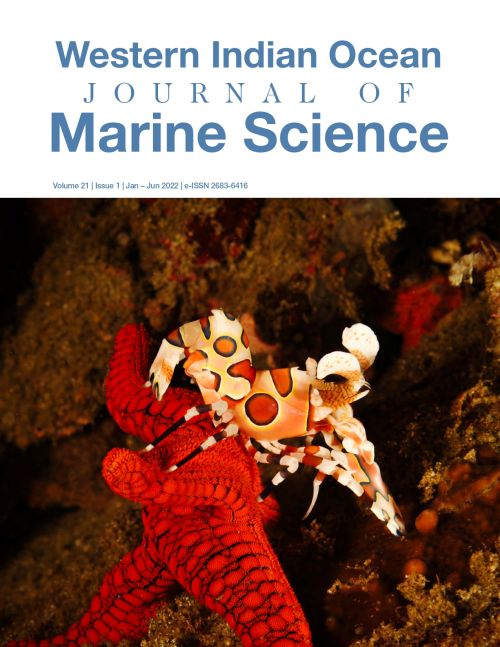Main Article Content
Assessment of vertical and horizontal distribution of meiobenthos along a salinity gradient in the Tana and Sabaki Estuaries, north coast Kenya
Abstract
Meiobenthos respond to variability in salinity gradients in estuarine habitats and are thus suitable organisms for ecological studies. The vertical and horizontal distribution of the meiofauna community structure of two major estuaries (Sabaki and Tana) on the north coast of Kenya were compared. The aim was to draw a meiofaunal dataset inventory of the two estuaries and to examine how salinity gradient, seasonality and sediment characteristics influence their structure. Replicate samples were collected from three sampling stations along the salinity gradient of each river estuary. A total of 3,556 individuals belonging to 26 taxa were recorded. Based on seasons and across stations, the upper surface (0-5 cm) layer recorded the highest meiobenthic density (90 ± 42 ind.10 cm-2), followed by 46 ± 23 ind.10 cm-2 (5-10 cm) and 30 ± 8 ind.10 cm-2 in the deepest sediment layer (10-15 cm) studied. The southeast monsoon season recorded the highest mean density (160 ± 22 ind.10 cm-2) compared to the northeast monsoon season (22 ± 12 ind.10 cm-2) for both estuaries. Results of the non-Metric Multidimensional Scaling technique revealed distinct seasonal composition in meiobenthos but not between the estuaries. Results of the 2-way ANOSIM test confirmed no significant differences in meiobenthic composition between the estuaries (p = 0.712). However, seasonal difference was significant (p = 0.001) with higher densities for nematoda (166 ± 99 ind.10 cm-2 and 56 ± 29 ind.10 cm-2) recorded in Tana and Sabaki, respectively during the southeast monsoon season. At least 7 taxa out of a total of 26 were present in both estuaries. Salinity gradient, season and sediment depth were found to influence the meiobenthic densities and taxa composition.






